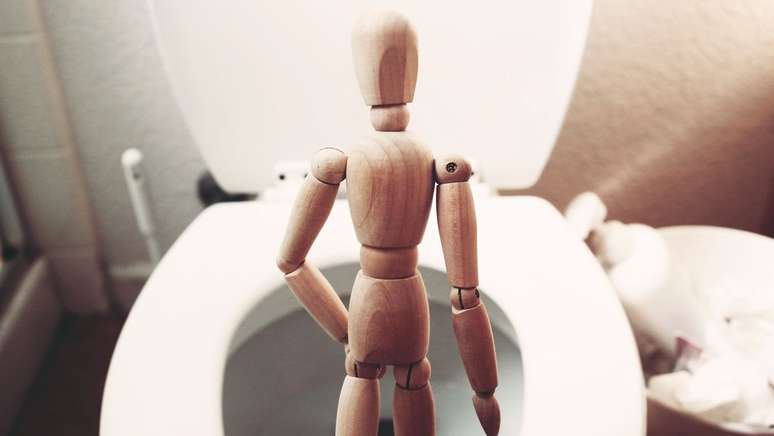Depending on diet, medicine, or certain diseases, a person’s urine stops being yellow, turning purple, blue, green, brown, red, or even neon.
The human body is a complex organism and, even if we don’t realize it, it communicates at all times, even through the color of our urine. Variations of the traditional yellow can indicate problems with dehydration, strange diets, drug use, or even certain illnesses.
To give you an idea, there are also reports of people who, due to numerous factors, they pissed purple, as we will explain below. The most important thing is to understand what these color changes mean, and if you are in any doubt or suspect any complications, it is always best to see a doctor.
In these cases, a general practitioner can help diagnose health problems detected by urine, as well as look for other signs and symptoms that have gone unnoticed. However, the best expertise to look for is that of a urologist. Contrary to popular belief, these professionals serve both men and women, as they specialize in studying the urinary tract: the kidneys, bladder, and urethra.
Next, check out what each urine color means on a person’s health:
yellow urine
The most classic and healthy color of urine is yellow, which can vary in shade, i.e. a little lighter and a little darker. Basically, it is the standard color obtained by diluting urochrome pigment in water.
Here it is worth explaining that this is produced by the body when it “breaks down” (metabolism) hemoglobin — the protein that carries oxygen in red blood cells — and is originally red-brown, but the color fades to until it reaches the yellow we know.
Dark yellow, orange or brown urine
When urine is a dark yellow, orange or even brown tone, the first thing the person should do is drink more water and look for ways to keep the body more hydrated, such as having a bottle of water next to them while they work , for example example. Another idea is to try going to the bathroom several times a day. The more concentrated the pee, the darker it will be, and that’s not healthy at all.
Interestingly, strenuous exercise can also cause this change, but temporarily. The picture is known as hematuria after physical exertion. The darkening of the pee can also be a reaction to some medications, such as chloroquine or laxatives. Also, it could be an indicator of certain liver (liver) diseases, as it could be related to the entry of bile into the urine.
transparent urine
Unlike dark urine, the person may have pee so clear that it becomes almost transparent, resembling water. It is possible that the person is drinking too much water. In some rarer cases, this can be an indicator of liver problems such as cirrhosis or viral hepatitis.
neon yellow urine
It may sound like a joke, but some people do, in fact, have neon or bright yellow pee. This usually occurs with people who have high concentrations of B vitamins, such as B2 (riboflavin) and B12 (cobalamin). Changes in diet or supplementation can fix the problem.
Urine in red, purple or pink colors
Now we come to the more exotic urine colors. If your pee turns red, purple or pink, the first thing to investigate is your diet. This is because different foods, such as beets and blackberries, can temporarily change the color. Some antibiotics and laxatives can also have the same effect.
If the red-facing hue is more recurring, caution should be exercised. The color change may be associated with the presence of blood in the pee. This can be a sign of various diseases, such as kidney stones, bladder tumors or even an enlarged prostate.
More recently, a case went viral in the United States of an elderly woman who was hospitalized and, after four days of hospitalization, apparently started peeing purple in the United States. This is a rare condition known as purple urine collection bag syndrome (PUBS). Except that, in fact, the urine does not come out of that colour, but it is due to a chemical reaction involving the material of the bag. The case report was published in the journal Oxford Medical Case Reports.
Blue or green urine
Yes, a person’s urine can turn blue or green, but in most cases the coloration is directly associated with diet or, more specifically, the use of food coloring such as methylene blue. Additionally, some medications can also cause the condition, such as the antidepressant amitriptyline.
Another group of possibilities for changing the color of pee involves the existence of a bacterial infection, such as hospital bacteria. Pseudomonas aeruginosaor even be associated with low levels of calcium in the body.
foamy urine
Foamy urine isn’t necessarily a color, but it can be a warning sign if you rule out the main and most common causes. Among them are: strong jets, cleaning products present in the toilet or the presence of semen, in the case of men.
If the foaming is not caused by any of these factors and is regular, this change in urine may indicate some chronic disease or even kidney problems. The change is also associated with Crohn’s disease and diverticulitis.
After finding out so much about possible pee colors, if you still don’t notice the color of your urine, you should start this habit right away. In addition to pee, it’s important to keep an eye on feces and even nails. After all, the body speaks, but this language is understood only by those who know themselves.
Source: Health line AND Cleveland Clinic
Trending on Canaltech:
- Has Xiaomi lost its charm?
- ‘Oumuamua’s new explanation is the simplest of all, and may be right
- Coffee consumption increases the premature ventricular beat and disturbs sleep
- The colossal galaxy rotates and points its energy jet in our direction
- The situation | Meet the Brazilian road movie that will make you laugh
- OpenAI CEO says Elon Musk “is an idiot” who cares about the future
Source: Terra
Rose James is a Gossipify movie and series reviewer known for her in-depth analysis and unique perspective on the latest releases. With a background in film studies, she provides engaging and informative reviews, and keeps readers up to date with industry trends and emerging talents.





